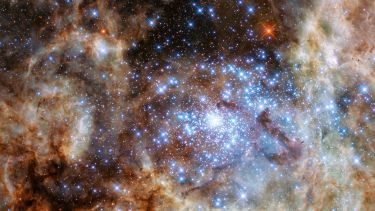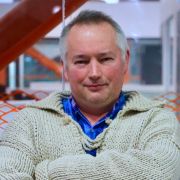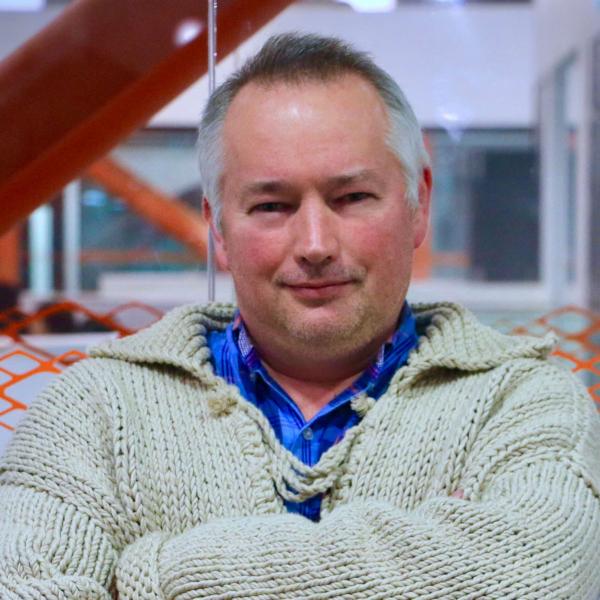Members
Current and former members of the Plasma Dynamics Group.

Academics
- Dr Istvan Ballai
-
Dr Istvan Ballai's main research interest is in linear and nonlinear MHD waves occurring in solar and interplanetary plasmas.
Waves can carry energy and momentum; when transferred to inhomogeneous plasmas they can heat or accelerate the plasma therefore MHD waves may play an important role in explaining the observed high temperatures in the solar corona.
Waves can transport information about the environment in which they propagate, so they serve as a perfect tool for plasma diagnostics. We use local and global coronal waves to find average values for magnetic field and transport coefficients in the solar corona.
- Dr Viktor Fedun
-
Dr Viktor Fedun's research is primarily concerned with the mathematical modelling of physics of solar/space plasmas, sun-solar wind and solar-terrestrial systems.
The study of processes occurring in such systems is crucially important for understanding the sun, predicting space weather and understanding the dynamics of space and laboratory plasmas.
This includes mathematical modelling of solar magnetic flux tubes and processes that heat and maintain the coronal plasma at multi-million degree temperatures, studying fundamental plasma processes such as waves and instabilities in inhomogeneous media and determining the physical parameters of solar magnetic structures.
- Dr Rekha Jain
-
Dr Rekha Jain is interested in physical processes of plasmas. Her recent research has been focussed on investigating, theoretically and observationally, various wave phenomena that occur on the sun.
More specifically, this includes:
- investigating the effects of magnetism on the solar oscillations
- studying wave propagation in astrophysical atmospheres
- modelling and analysing resonant modes of magnetic loops in the sun's corona
- understanding how the sun's outer atmosphere is heated to million degrees
- modelling of magnetic reconnection and nanoflare heating
- numerical simulation of forced magnetic reconnection
- Dr Gary Verth
-
Dr Gary Verth is interested in the energy transport and dissipation of various MHD wave modes on their journey up through the sun's atmosphere.
His models are tested using the latest and highest spatial/temporal resolution ground and space-based wave observations.
More recently, he has become interested in testing these MHD models in laboratory plasma experiments.
Research associates
- Dr Suzana de Souza e Almeida Silva
PhD students
- Abdulaziz Alharbi
-
Mr Abdulaziz Hamadi H Alharbi is working on waves and oscillations in partially ionised plasmas, with a special emphasis on the development and propagation of linear and nonlinear waves.
Email: aalharbi8@sheffield.ac.uk
Supervisors: Dr Istvan Ballai, Dr Gary Verth, Dr Viktor Fedun
- Abdulrahman Badah Albidah
-
Mr Abdulrahman Albidah will be working on analysis of coupled shock waves in two-fluid plasmas, where the coupling will be provided by the collision between particles.
Using a multi-scaling approach, he will help determine the nonlinear evolutionary equations of these shocks and their temporal evolution using a Cole-Hopf transform.
Email: abalbidah1@sheffield.ac.uk
Supervisors: Dr Istvan Ballai, Dr Gary Verth, Dr Viktor Fedun
- Anwar Aldhafeeri
-
Ms Anwar Aldhafeeri is working on conformal mapping of the linearized MHD wave equations.
Email: aaaldhafeeri1@sheffield.ac.uk
Supervisors: Dr Gary Verth, Dr Viktor Fedun
- Farhad Allian
-
Mr Farhad Allian is working on MHD waves and plasma instabilities in the solar atmosphere.
Email: FAllian1@sheffield.ac.uk
Supervisors: Dr Rekha Jain
- Fisal Ahmed H Asiri
-
Mr Fisal Ahmed H Asiri is working on problems related to the MHD wave propagation in the solar atmosphere.
Email: FAHAsiri1@sheffield.ac.uk
Supervisors: Dr Istvan Ballai, Dr Gary Verth, Dr Viktor Fedun
- Matthew Lennard
-
Mr Matthew Lennard is working on problems related to the MHD wave propagation in the solar atmosphere.
Email: mglennard1@sheffield.ac.uk
Supervisors: Dr Gary Verth, Dr Viktor Fedun
- Max Mcmurdo
-
Mr Max Mcmurdo is working on problems related to the MHD wave propagation in the solar atmosphere.
Email: mmcmurdo1@sheffield.ac.uk
Supervisors: Dr Istvan Ballai, Dr Gary Verth, Dr Viktor Fedun
- Samuel Joseph Skirvin
-
Mr Samuel Joseph Skirvin (STFC funded student) is working on observational, numerical and analytical studies of the Kelvin-Helmholtz and Rayleigh-Taylor in solar plasma.
In particular:
- Observationally identify regimes of appearance of the RT instability, its morphology and lifetime by analysing Solar Optical Telescope data (Ca II spectral lines) on board the Hinode satellite and ground-based data from the Swedish Solar Telescope (SST).
- Numerically model jet like structures, with particular interest in processes related to the magnetic field strength and direction to analyse the appearance and development of the RT instability at the top part of the jet due to effective acceleration.
- Investigate processes related to the Kelvin-Helmholtz (KH) instability taking place during the evolution of the jet.
- Analytically obtain conditions for RT and KH instabilities in the presence of a magnetic field (for example modelled by using self-similar approach) and apply them to the observational and numerical data discussed in the previous points.
- Analysis of wave excitation (MHD waves including Alfven) and their energy budget directly due to jet propagation.
Email: sjskirvin1@sheffield.ac.uk
Supervisors: Dr Gary Verth, Dr Viktor Fedun
- Yasir Mohammed H Aljohani
-
In the framework of his PhD project, Yasir will study Rayleigh Taylor Instability (RTI) in the solar plasma.
In particular:
- Observationally identify regimes of appearance of the RTI, its morphology and lifetime by analysing Solar Optical Telescope data (Ca II spectral lines) on board Hinode satellite and ground-base data from Swedish Solar Telescope (SST).
- Numerically model jet like structures, with particular interest in processes related to the magnetic field strength and direction to analyse appearance and development of RTI at the top part of the jet due to effective acceleration.
- Investigate processes related to the Kelvin-Helmholtz (KH) instability taking place during the evolution of the jet.
- Analytically obtain conditions for RT and KH instabilities in the presence of a magnetic field (for example modelled by using self-similar approach) and apply them to the observational and numerical data discussed in the previous points.
The project will provide a much better understanding of the plasma processes related to RT and KH instabilities and will be extremely useful for understanding the morphology of solar jets.
The project is also important for data understanding which will be soon available for the sola-space community from a new generation of high-resolution instruments such as DIKIST and EST.
Email: yaljohani2@sheffield.ac.uk
Supervisors: Dr Istvan Ballai, Dr Gary Verth, Dr Viktor Fedun
- Yuyang Yuan
-
In the framework of the project, Yuyang will study the physics and main properties of solar spicules, which are fundamentally important for the understanding of energy transport between the lower and upper layers of the solar atmosphere.
The machine learning, deep learning and pattern recognition methods will be used for comprehensive analysis of observational data.
He will develop a new algorithm to fully automate the process of spicule identification and tracking to facilitate a more robust statistical analysis of their properties (based on Solar-H-alpha and Ca-II spectral observations). These analyses will be based on the techniques mentioned above which will be complemented by computer vision, POD/DMD methods.
Results of the project will lead to the better understanding of the origin of spicules and their generic properties such as length, width, life-time and behaviour (oscillations). By developing this automated detection and tracking system, it will both speed up the analysis processes and save time for further study.
This research is extremely important for near future solar observations with the new Daniel K. Inouye Solar Telescope (DKIST, USA) and the European Solar Telescope (EST, Europe) which are being constructed and aimed at resolving the solar coronal heating paradox. The UK and the University of Sheffield academics in DKIST are supported by STFC.
Supervisors: Dr Gary Verth, Dr Viktor Fedun
Members
- Dr Mykola Gordovskyy
-
School of Physics and Astronomy, the University of Manchester
Dr Mykola Gordovskyy works in the field of solar physics with particular interests in particle acceleration in various solar magnetic field configurations.
- Dr Dave Jess
-
Astrophysics Research Centre, School of Mathematics and Physics, Queen's University
Dr Dave Jess' main studies of the sun concern its lower atmosphere which can be seen in optical wavelengths. He is predominantly interested in how the sun's energy travels through its atmosphere, both in the form of flares and waves.
To study this, Dave utilises a wide range of instruments, including the Queen's University developed ROSA camera system, as well as the Royal Society funded Hydrogen-Alpha Rapid Dynamics camera (HARDcam), of which he is the Principal Investigator.
Email: d.jess@qub.ac.uk
- Yuriy Khotyaintsev
-
Swedish Institute of Space Physics, Uppsala, Sweden
Yuriy Khotyaintsev's research interests include
- magnetospheric physics
- magnetic reconnection and particle energisation
- analysis of satellite data
E-mail: yuri@irfu.se
- Dr Eamon Scullion
-
Department of Mathematics, Physics and Electrical Engineering, Northumbria University
Dr Eamon Scullion's research interests include
- observational solar physics
- numerical simulations of the sun
- plasma physics
- magneto-hydrodynamics
- astrophysics
E-mail: eamon.scullion@northumbria.ac.uk
- Sergiy Shelyag
-
School of Information Technology, Faculty of Science, Engineering and Built Environment, Deakin University
Sergiy Shelyag's main research interests and experience are
- large-scale mathematical modelling of astrophysical processes
- astrophysical plasma physics
- computational fluid dynamics and magnetohydrodynamics (MHD)
- numerical radiative transport
- spectropolarimetry with applications to the solar and stellar atmospheres
Email: sergiy.shelyag@deakin.edu.au
Academic visitors
- Sergey Ruzheinikov
-
Department of Automatic Control and Systems Engineering, the University of Sheffield
Sergey's main research interests and experience are in data analysis and mathematical modelling of Very Low Frequency waves in the Earth-Ionosphere wave guide.
Email: luxs@quidunited.co.uk
Former members
Former academic members
- Eun-jin Kim
-
Research interests:
- MHD turbulence and transport of magnetic fields, momentum and chemical species.
- Generation and evolution of magnetic fields (dynamos) and differential rotations.
- Anomalous transport and its regulation in laboratory plasmas.
- Non-equilibrium statistical theory, structure formation and self-organisation.
- Alastair Williamson
-
Alastair is interested in the mathematical modelling and analysis of MHD wave propagation in the various magnetic configurations of the solar atmosphere.
Former research associate
Yuyang Yuan
Former PhD students
- Eleanor Vickers
-
2015 - 2019
Thesis: Waves and Instabilities at Contact Discontinuities
Supervisors: Dr Istvan Ballai, Professor R Von Fay-Siebenburgen
- Hope Thackray
-
2016 - 2020
Thesis: Study of Oscillations and Flows in Solar Magnetic Active Regions
Supervisor: Dr Rekha Jain
- Ioannis Giagkiozis
-
2013 - 2017
Thesis: Axisymmetric MHD Modes in Twisted Magnetic Fields
Supervisors: Dr G Verth, Dr V Fedun, Professor R Von Fay-Siebenburgen
Former member
- Alexandr Rozhnoi
-
The Schmidt Institute of Physics of the Earth, Russian Academy of Sciences
My current research is connected with the investigation of electromagnetic phenomena related to large earthquakes in the global lithosphere-atmosphereionosphere coupled system using simultaneous satellite and ground-based observations.
The seismo-electromagnetic effects are the electric and magnetic perturbations caused by natural geophysical activities such as earthquakes, tsunami and volcanic eruptions.
It includes
- electromagnetic emissions in a large frequency range
- perturbations of ionospheric layers
- anomalies on the records of Very Low Frequency transmitter signals
- night airglow observations
Such phenomena are of great interest, because they may start several days or a few hours before the shock and can be considered as short term precursors.
A main problem in using of this method is to distinguish the physical processes in the ionosphere, which are generated by lithosphere, atmosphere (ie planetary waves, cyclones) or solar activity (ie CME, solar flares, etc).
Email: rozhnoi@ifz.ru


